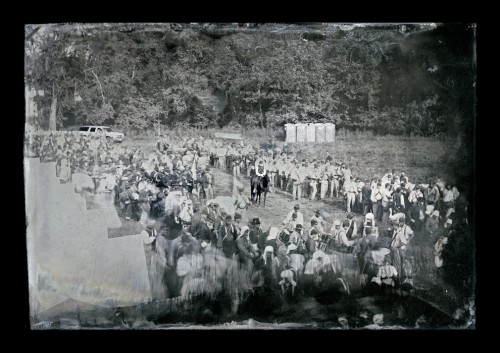I went to the Smithsonian site through another link, but found this new article (penned by Tony Horwitz!) in the sidebar. A fascinating look at how technology can be used to evaluate historical mysteries, such as why Lee pressed an assault at Gettysburg when Longstreet was convinced it would fail.
Her principal tool is geographic information systems, or GIS, a name for computer programs that incorporate such data as satellite imagery, paper maps and statistics. Knowles makes GIS sound simple: “It’s a computer software that allows you to map and analyze any information that has a location attached.” But watching her navigate GIS and other applications, it quickly becomes obvious that this isn’t your father’s geography.
First, a modern topographical map of Gettysburg, Pennsylvania, appears on her screen. “Not enough detail,” she says, going next to a contour map of the same landscape made in 1874, which she has traced and scanned. “Here’s where the carto-geek in me comes out,” she says, running her finger lovingly across the map and noting how it distinguishes between hardwood forest, pine woods and orchards—the kind of fine-grained detail that is crucial to her work…
What emerges, in the end, is a “map” that’s not just color-coded and crammed with data, but dynamic rather than static—a layered re-creation that Knowles likens to looking at the past through 3-D glasses. The image shifts, changing with a few keystrokes to answer the questions Knowles asks. In this instance, she wants to know what commanders could see of the battlefield on the second day at Gettysburg. A red dot denotes General Lee’s vantage point from the top of the Lutheran Seminary. His field of vision shows as clear ground, with blind spots shaded in deep indigo. Knowles has even factored in the extra inches of sightline afforded by Lee’s boots. “We can’t account for the haze and smoke of battle in GIS, though in theory you could with gaming software,” she says.

